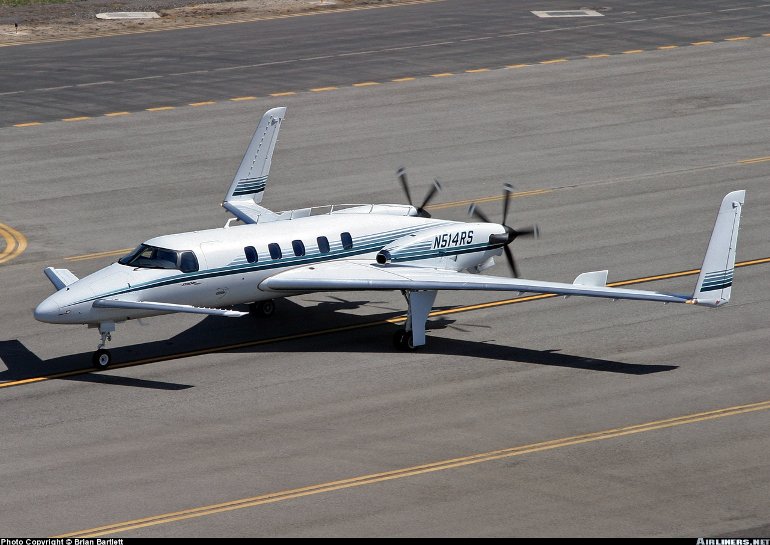Aircraft Technical Data
Beech 2000 Starship 1

| Details | |
| Country of Origin | United States of America |
| Type | Advanced technology corporate transport |
| History | Despite its extensive use of modern technologies and innovative design the Starship was a commercial failure. Conceived as a new generation light corporate transport in the King Air class, the Starship traces back to the 85% scale proof of concept demonstrator built by Scaled Composites, which first flew in August 1983. The prototype Starship 2000 proper made its first flight on February 26 1986, provisionally powered by PT6A65 turboprops. A second prototype equipped with Collins avionics entered the flight test program in June 1986, while a third development aircraft took flight in January 1987. Initial US FAA certification was awarded on June 14 1988, while the first production example was flown on April 25 1989. The unconventional Starship design incorporates many innovations. Foremost of these is its rear mounted laminar flow wing and variable geometry canards or foreplanes. The foreplanes sweep forward with flap extension for pitch trim compensation, designed to make it impossible for the Starship to stall on takeoff or landing. The wing itself is constructed almost entirely of composites (something which attracted much criticism because of the associated difficulties of inspecting it thoroughly), and has tip mounted tails. The rear mounted engines are in a pusher arrangement, being behind the cabin noise is reduced, while their relatively close proximity to each other also improves single engine handling. The EFIS flightdeck has Collins avionics with early generation colour and monochrome CRTs. The improved Starship 2000A was certificated in April 1992. It introduced changes including seating for six instead of eight, a slightly higher max takeoff weight and increased range. A lack of customer interest forced Beech to terminate Starship production in early 1995 after just 53 had been built (including three prototypes), a somewhat inglorious end to a technologically innovative and promising design. |
| Powerplants | Two 895kW (1200shp) Pratt & Whitney Canada PT6A67As, driving five blade constant speed McCauley propellers. |
| Performance | 2000 - Max cruising speed 622km/h (335kt), economical cruising speed 546km/h (295kt). Initial rate of climb 3225ft/min. Max range 2630km (1634nm). 2000A - Max cruising speed 621km/h (335kt), economical cruising speed 570kt (307kt). Initial rate of climb 2748ft/min. Range with reserves 2920km (1576nm). |
| Weights | 2000 - Empty equipped 4484kg (9887lb), max takeoff 6531kg (14,400lb). 2000A - Empty equipped 4574kg (10,085lb), max takeoff 6758kg (14,900lb). |
| Dimensions | Wing span 16.60m (54ft 5in), length 14.05m (46ft 1in), height 3.94m (12ft 11in). Wing area 26.1m2 (280.9sq ft). |
| Capacity | Flightcrew of one or two pilots. Standard passenger layout for eight in 2000 or six in 2000A. |
| Production | Production ceased in early 1995 after three prototypes, 18 Starship 2000s and 32 Starship 2000As had been built |
| Related Links | Beech 2000 Starship 1 |
The backbone of this section is from the The International Directory of Civil Aircraft by Gerard Frawley and used with permission. To get your own copy of the book click here. |
|








